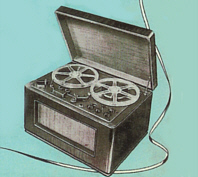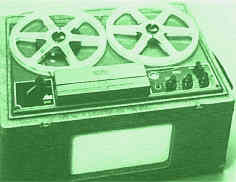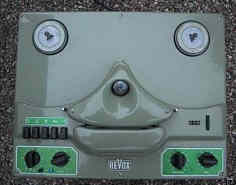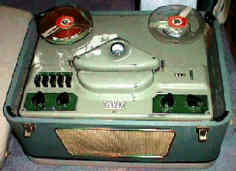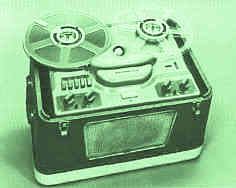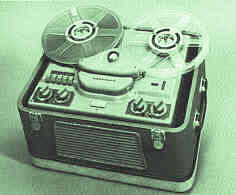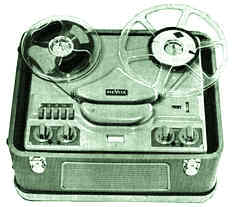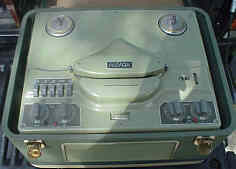|
|
Already In 1949 the Studer name was established amongst the pioneer leaders in the field of tape recording. From the outset it was the firm am of Herr Studer to produce a machine which would satisfy the discriminating amateur. Since high tape speeds were necessary the Dynavox, as it was first called, had only one speed, 7 1/2 i.p.s.(19cm/sec.), and operated in the full track mode to ensure optimum dynamic range and the lowest possible background noise from the rather poor tape available at that time. Appreciating this need for long, uninterrupted playing times, the machine was designed to accommodate 25 cm. spools from the start. |
|
|
|
|
|
In 1951 Dynavox became Revox and the T26 continued virtually unchanged until cessation of production in 1955.Þ The T26 photo gallery |
|
|
|
|
|
In 1956 production of the Type 36 series commenced with the A36 machine. It was the aim of the manufacturer to virtually, eliminate mechanical wear and at the same time produce a transport mechanism of the highest performance, utterly dependable and a joy to use. Thus the three-motor principle, already acknowledged as the ultimate in the professional field, was employed. So successful was the original system that it remains today, with only minor improvements. |
|
|
|
|
|
Although the A36 series had separate record and reply amplifiers. it was not until the introduction of the B36 machine in 1957 that separate heads were fitted. The B36 series thereby became the first tape recorder designed for the amateur but with the performance of a professional machine. |
|
|
|
|
|
The facilities demanded by the buyer continued to grow and in 1958 the C36 was introduced. Several minor changes, improvements and extra facilities were brought about to make the machine as versatile as possible. This was the last of the mono machines with the exception of the CD36 which is a high-speed machine for full track operation in the professional field. |
|
|
|
|
|
The first Revox Stereo Recorder, the D36, appeared in.1960. The mechanics were retained from the previous series and allied to these were new electronics to permit complete stereo recording and playback to cathode follower level with the additional provision of a monitor amplifier. |
|
|
|
|
|
Tape recording techniques continued to advance rapidly and the E36 was engineered to provide the mixing facilities, echo and multiple recording possibilities that enthusiasts were seeking. This was the first Revox to be introduced to the British Market in any quantity, appearing early in 1962. Since Continental standards differ from those in the U.K., a revised edition of the E36 is now provided to satisfy the requirements, of international use as far as possible. |
|
|
|
|
|
In the F36 more features are included, making the machine easily the most versatile available. In addition to employing the latest recording characteristic the machine is also the first to use the graduated twin beam magic eye with its incredibly short rise time, giving an accurate register of transients. Production starts in 1962Þ The F36 prospect from late 1962 (UK)Þ The F36 photo galery |
|
|
|
|
|
Production start of the famous Revox G36. It was sold to the UK market under the name of "Revox 736". The famous G36 was a mono/stereo machine with stacked erase heads, separate recording heads separate replay heads, six audio pre-amplifiers. and a push/pull power amplifier. Tape speeds of 3 3/4 and 7 1/2 .i. p. s. are obtained by pole-changing the synchronous Papst capstan motor. Twin-track and four-track models are available, both fully stereo phonic, recording to the latest C.C.I.R. (DIN 45113) characteristic. Tape spools 27 cm. Þ The 736 prospect from 1964 (UK)Þ The G36 photo galery Þ Download G36 Insruction Manual |
